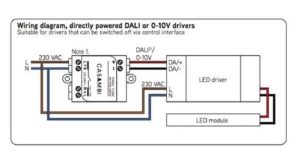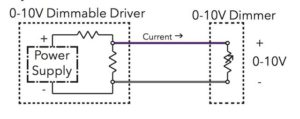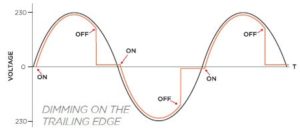Advance International have supplied dimmable luminaires to many projects which operate from 100% light output to 0.1% with a very controlled, smooth dim. Sensors, such as daylight control, presence detection and time relays can also be wired into these dimming systems, offering a true energy efficient scheme.
We are always on hand to help with dimming enquiries and will be able to recommend which product will operate with which protocol, we also have a matrix below which will assist in the choosing of the correct driver.
Dimming and Control
There are several reasons to employ dimming in a lighting project:
- Ambiance control – interest and comfort
- Energy Savings
- Presence, Absence and Occupancy control
- Auto response to daylight levels
- Spaces which have different functions at different times.
- Modern “Smart” control with your smart phone or tablet.
DALI and DALI 2
DALI (Digital Addressable Lighting Interface) is a lighting control interface in accordance with IEC 62386. Each DALI device can be individually addressed facilitating the installation of robust, scalable and flexible lighting networks. Products can then be configured to work alone or in groups. DALI products can also respond to broadcast commands to allow group control without complex programing being necessary. DALI is a two way protocol such that devices can report a failure or answer a query command. Two control wires are needed for installation to carry both control data and power although the polarity of the wires does not have to be observed.
DALI-2 was first introduced in late 2014 and refers to version 2 of IEC 62386. The main thrust of this standard was to ensure all DALI controller devices are standardised for improved interoperability.
The level of dimming achievable depends on type of control gear used typical dimming levels are 1% however 0.1% dimming capability is also available.

Analogue 0-10V / 1-10V
Analogue control gear needs to be supplied with a control d.c. voltage (source) to control the level of dimming where 10V means the product is fully lit and dimming takes place as the control voltage is reduced toward 1V. With a 1-10V system a voltage of 1V or less will result in the product being dimmed to its lowest level allowed by the control gear used. Normally this is either 1% or 0.1% depending on the capability of the control gear. In the case of a 0-10V system voltages at 0.7V or less result in the product turning off sometimes known as dim to dark. In some cases the control gear will operate in a “sink” mode where the control gear or a group of control gears can be controlled by a potentiometer (Variable Resistor).
This system needs control wires to be installed which are polarity sensitive. Generally this is regarded as a simple system where good quality dimming can be achieved.

Phase – Leading Edge – Trailing Edge
The control gear for dimming protocol responds by reacting to a difference in supply voltage produced by a “mains” (Phase) dimmer switch. A mains dimmer effectively chops out and therefore reduces the mains voltage supplied to the control gear. Some dimmers chop out the front or leading edge of a 50Hz mains waveform others chop out the rear edge. To complicate things some dimmers use a combination of both.
If products need to be dimmed by mains (Phase) dimming it is important to match the dimmer to the control gear of the LED lighting product – If there is a good match dimming capability can be good although if stable low level dimming is desired then this is not the most reliable method of dimming.

Smart Lighting
In general terms, smart lighting refers to lighting controlled by WiFi, Radio or Bluetooth (BLE) protocols.
Smart systems can capitalise on the advantages of connectivity can give all the benefits of more complex systems such as DALI but without the need for expensive installation costs, controller devices and commissioning. The control device can be a free app on your smart phone or tablet.
Some smart lighting systems can take advantage of embedded technology such as iBeacons. This allows a system to send data to a person’s phone within the local environment, for example sales offers in the case of retail or exhibit information for museums. This can be location specific because iBeacons within lighting products can determine a person’s location via their smart phone so data sent or received can be real time relevant. This allows for simple smart systems projects such as restaurant / small retail all the way through to complex building management control.
Generally, Advance remains control system agnostic where luminaires can be supplied incorporating technology in line with customer requirements. However our preferred solution is the BLE (Bluetooth Low Energy) mesh protocol favoured by companies such as Xicato and Casambi. BLE allows for the connection and control of lighting products via standard smart phones and tablets. This avoids any security issues to which other WiFi or IP address controlled systems which might be susceptible. That said gateways can be incorporated into systems where remote control and data reporting via the internet is required. Additionally other Bluetooth control devices such as switches, sensors, presence/absence light levels can easily be integrated.
We are of course happy to discuss any Smart Lighting requirement you may have.

